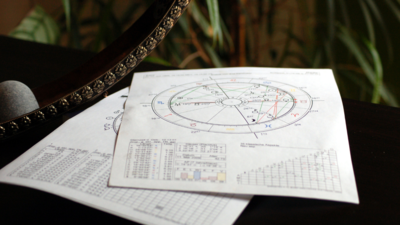What Are Aspect Orbs in Astrology?


In astrology, an aspect occurs when two planets form a specific angle in relation to each other within a natal, synastry, or composite chart. These planetary relationships, or aspects, give insight into how different energies interact. The exactness of the angle between the planets determines the strength of the aspect, and this is where “aspect orbs” come into play.
An aspect orb is the allowable degree of variation from the exact angle of an aspect. For example, a perfect conjunction between two planets would form at 0 degrees, but astrologers often allow for a small range of degrees around this exact point to still consider the aspect active. This range is the orb.
1. How Orbs Work
Each aspect has a specific angular degree—such as a conjunction (0°), opposition (180°), square (90°), trine (120°), or sextile (60°). The orb represents how many degrees away from this exact angle two planets can be while still influencing each other. For example, if two planets are in conjunction with a 3° orb, their angle may range from 0° to 3°, still indicating a strong conjunction.
2. The Importance of Orb Size
The size of the orb allowed depends on the type of aspect and the astrologer’s approach. Generally, stronger aspects like conjunctions and oppositions have larger orbs (up to 10°), while softer aspects like sextiles and trines may have smaller orbs (around 5°). The Sun and Moon are often given wider orbs due to their significance in a chart.
3. Narrow Orbs for Greater Focus
Smaller orbs, often 1-3 degrees, create sharper, more intense effects, while wider orbs indicate a softer influence. Interpreting a chart with tight orbs often suggests that the planets’ energies are in stronger communication, significantly shaping a person’s experiences.
Understanding aspect orbs allows astrologers to interpret planetary relationships with nuance, highlighting both subtle and powerful influences within a chart.







